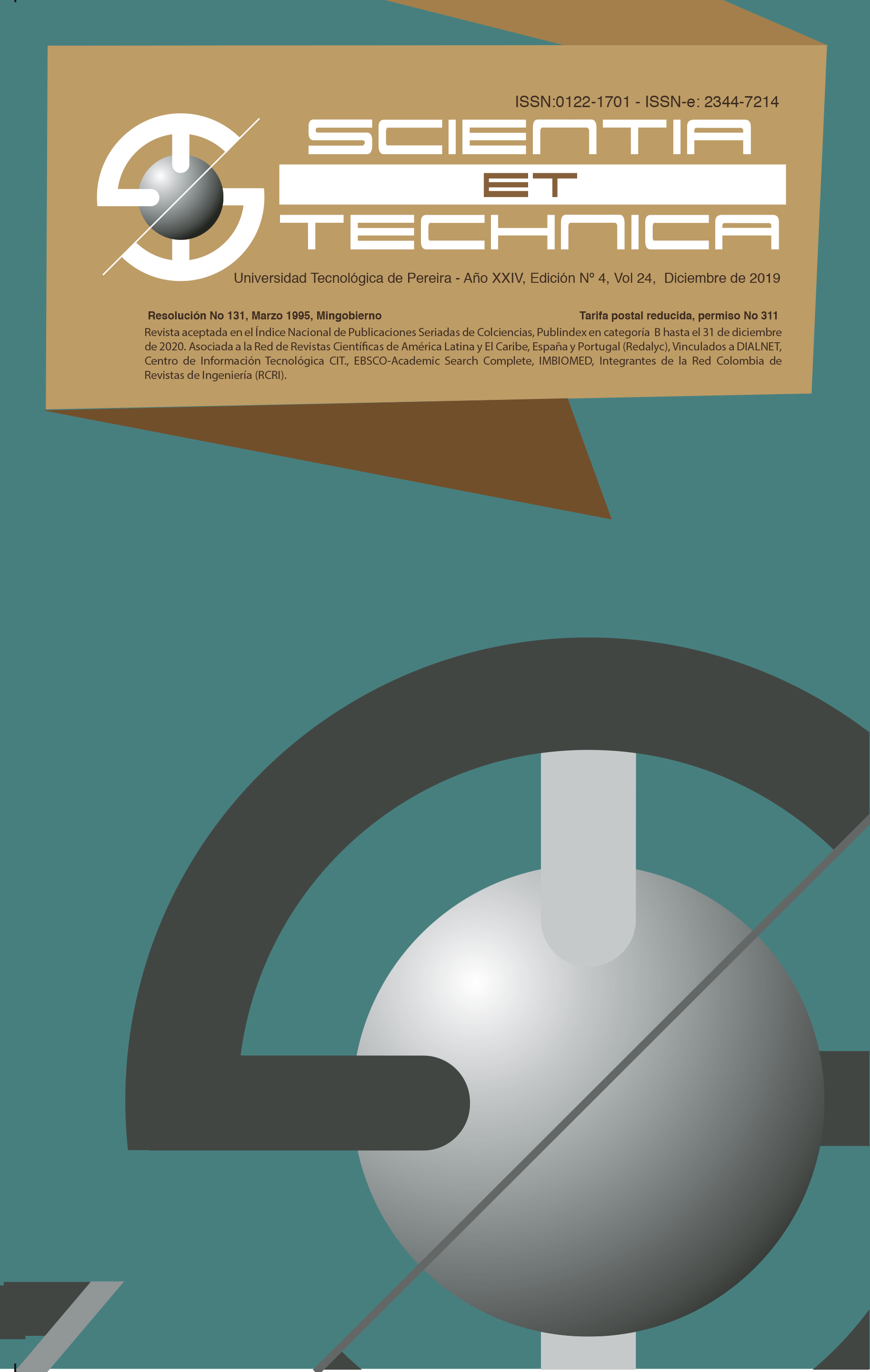Medición de materiales con radiación Terahertz
DOI:
https://doi.org/10.22517/23447214.20171Keywords:
Coeficiente de absorción, Antenas fotoconductoras, Detección piroeléctrica, Índice de refracción, Radiación Terahertz.Abstract
La radiación Terahertz (THz) o Rayos T, define las ondas electromagnéticas con un rango de frecuencias entre 0,1 THz y 10 THz. Es posible categorizar las técnicas de detección de radiación en la banda de los THz en técnicas coherentes e incoherentes. La principal diferencia entre ellas es que en la técnica coherente se determinan tanto la amplitud como la fase de la señal recibida; pero, en la técnica incoherente, solo se mide la intensidad de la señal. La espectroscopía THz en el dominio del tiempo es, generalmente un método coherente. En él, la señal de THz induce corriente en la antena detectora, debido a la existencia de pares libres de electrones en el espacio de la antena. La fase de la señal de THz en este método se puede medir variando la longitud del camino óptico del pulso que excita las antenas. Los detectores directos como los piroeléctricos son principalmente detectores incoherentes. Estos detectores a temperatura ambiente son apropiados para aplicaciones donde no se requiere alta resolución espectral y tiempo de respuesta rápido comparados con los métodos coherentes. Este artículo presenta la medición experimental de diferentes materiales cuando se irradian con radiación de terahertz, aplicando técnicas de espectroscopia THz en el dominio del tiempo. La radiación es emitida por una antena fotoconductora, excitada por un láser de femtosegundos. Los resultados se obtienen al medir el pulso THz transmitido a través de los materiales al implementar sistemas de detección coherentes e incoherentes, obteniendo el índice de refracción y coeficiente de absorción, en caso de la técnica coherente, y el coeficiente de absorción en la técnica incoherente, para los distintos materiales estudiados en este trabajo.
Downloads
Downloads
-
Vistas(Views): 1016
- PDF (Español (España)) Descargas(Downloads): 588
Published
How to Cite
Issue
Section
License
Copyrights
The journal is free open access. The papers are published under the Creative Commons Attribution / Attribution-NonCommercial-NoDerivatives 4.0 International - CC BY-NC-ND 4.0 license. For this reason, the author or authors of a manuscript accepted for publication will yield all the economic rights to the Universidad Tecnológica of Pereira free of charge, taking into account the following:
In the event that the submitted manuscript is accepted for publication, the authors must grant permission to the journal, in unlimited time, to reproduce, to edit, distribute, exhibit and publish anywhere, either by means printed, electronic, databases, repositories, optical discs, Internet or any other required medium. In all cases, the journal preserves the obligation to respect, the moral rights of the authors, contained in article 30 of Law 23 of 1982 of the Government Colombian.
The transferors using ASSIGNMENT OF PATRIMONIAL RIGHTS letter declare that all the material that is part of the article is entirely free of copyright. Therefore, the authors are responsible for any litigation or related claim to intellectual property rights. They exonerate of all responsibility to the Universidad Tecnológica of Pereira (publishing entity) and the Scientia et Technica journal. Likewise, the authors accept that the work presented will be distributed in free open access, safeguarding copyright under the Creative Commons Attribution / Recognition-NonCommercial-NoDerivatives 4.0 International - https://creativecommons.org/licenses/by-nc-nd/4.0/deed.es license.



